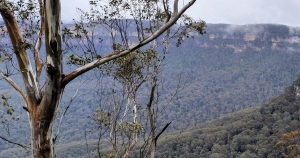This magnificent little spider – at 4mm he’s no bigger than a match head – is resident in St Ives, and in particular the St Ives Wildflower Garden, known in spider circles as a Peacock Spider hotspot. In fact the Peacock spider is very well connected to the St Ives, Hornsby and Ku ring gai areas – the species was first discovered locally in 1887 and noted in its use of microscopic abdominal flaps in an elaborate mating display to attract females.
More recently St Ives resident Dr Jurgen Otto, a scientist that specializes in mites, noticed the peacock spiders’ display on a walk in St Ives and filmed the amazing display. His videos have been viewed millions of times on the internet and he has made the spider well-known around the globe, even helping Sir David Attenborough find some for a recent documentary. Dr Otto has said in interviews that he wouldn’t live anywhere else, due to these little spiders.
And the name? The Maratus Volans has a set of extendable flaps at the sides of the abdomen which he extends like a peacock’s tail when he sees a female spider. The species name— volans—means “flying” in Latin, because in his description of them O.P-Cambridge indicated that the person who sent him the specimens from New South Wales had told him that he had seen the spiders “actually using [the flaps] as wings or supporters to sustain the length of their leaps.”[3] This belief has been debunked by the Australasian Arachnological Society.[7][8] Nevertheless, the designation “volans” remains.
Photographed here by Martin Anderson – and head to our website https://www.galstoncommunity.com.au or Facebook page to see Martin’s incredible video clip of the ritual.






